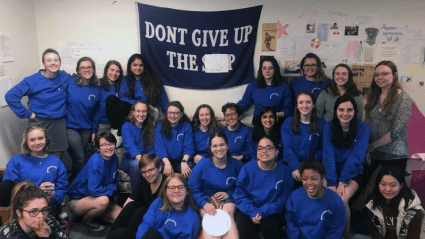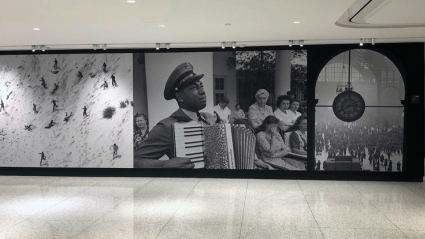From South Hadley to Time magazine: an ode to MHC and the liberal arts
Madeline discusses how she is connecting attending a small liberal arts college to study politics and philosophy with her career ambition of becoming a jouralist.
If you choose to go to a liberal arts college and study the social sciences or the humanities, there is one question that you’ll inevitably face about your choice of academic discipline: So, what are you going to do with that?
While not an illogical question to ask any person in their late teens or early 20s, the query is often infused with an added level of judgement or disbelief when you study something like philosophy or anthropology rather than computer science or biology. This is particularly true when there exists — elsewhere — an “obvious” degree connected to your career path of choice. In my case, that would be a journalism degree.

I want to be a journalist. I’ve wanted to be a journalist for years. But I don’t study journalism — I study politics and philosophy. And at the surface, my areas of study and my decision to attend a small liberal arts college seem counterintuitive to my career ambitions.
There is, of course, ample evidence that people who study the social sciences and the humanities can get jobs. And the romantic in me hates that education must be linked to a career opportunity rather than the pursuit of knowledge for its own sake. But I realize that as a high school senior, it can be terrifying to make a decision that you’ll live with for the rest of your life based only on vague statistics about mid-career salaries. Especially when your peers have the confidence that an engineering degree leads to an engineering job and that a nursing degree means you’ll someday actually be a nurse. And in a country with a student debt crisis, education for education’s sake can often seem like something reserved for only the most privileged.
So here is my story. That of someone pursuing an impractical degree at a seemingly illogical choice of college.

When I arrived at Mount Holyoke, I was able not only to join the Mount Holyoke News in my first semester, but also to become an editor. At bigger schools, which boast more resources and opportunities, the odds of a first-year student getting a leadership position within a major student organization are slim to none. Working for a smaller paper also meant that I was able to achieve a lot more in my leadership role in one year than many students at larger schools ever do. And it meant that everyone involved played a proportionately larger role in shaping the direction of the paper — all of which are beneficial experiences when applying for jobs and internships.
In my classes, though I don’t learn specific tricks of the trade, I do learn other skills. How to think analytically, conduct research and write well. These skills will surely be beneficial for my journalism career, but they also give me the flexibility to pursue other career paths if I change my mind. Furthermore, with a few exceptions, I think studying to have a specific career is inherently limiting. The world changes, technology changes, expectations change and the ultra-specific skills you learn inevitably become irrelevant. Whereas the ability to think, write and analyze will always be relevant.
Perhaps the best part of my decision to attend a small liberal arts college? Being able to connect with generations of graduates. The kind of loyalty shared by Mount Holyoke alumnae is specific to that of small liberal arts colleges. And it is a loyalty that transcends generations.

In 1976, a woman named Jane Bachman Wulf graduated from Mount Holyoke. I never met her, nor did I know her name until last spring. But in the years between her graduation and my learning her name, she worked at Sports Illustrated (1977-1998) and Time magazine (1999-2009), paving the way for future generations of women journalists.
After Wulf’s death in 2017, her husband established scholarships in her memory that allow Mount Holyoke students the chance to intern at Time and Sports Illustrated. These internships are connected to The Lynk, Mount Holyoke’s curriculum-to-career approach that guarantees every student $3,000 of funding toward an unpaid (or a low-paid) internship or research experience.

Thanks to The Lynk, I was able to spend my summer interning at Time. Even though I didn’t have any personal connections to the industry, I able to intern at one of the oldest, most well-known publications in the world. Even though I would probably never have the money to work and live in New York City without getting paid, The Lynk made it possible for me to do just that. Even though I don’t study journalism, I was more than capable of doing the work expected of me at Time.
I remain certain that the education I am receiving and the work I am doing at Mount Holyoke, combined with the loyalty of alumnae, will be more than enough to bring me success post-graduation.